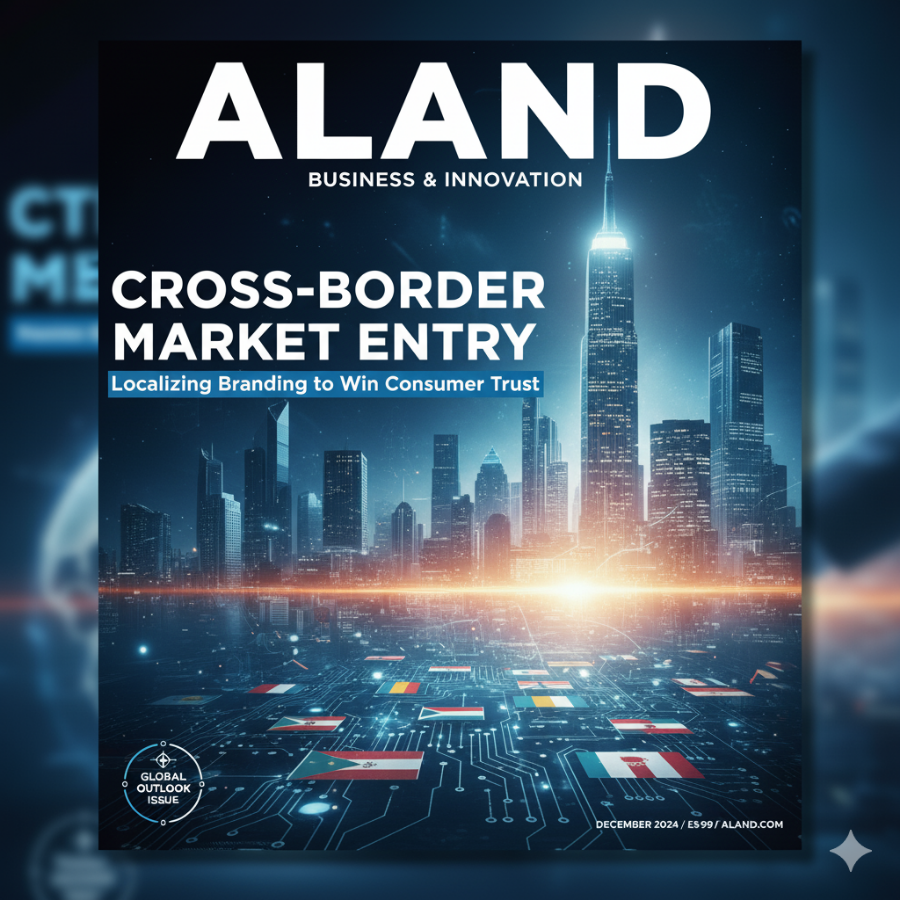
🤝 The Core of Trust: Beyond Language to Culture
When expanding across borders, a business doesn't just cross a geographical line; it crosses a cultural chasm. Simply translating content isn't enough; true success in Global Trade hinges on a strategy called "glocalization," where a brand maintains its global quality while embedding itself deeply in local culture. This is the essence of Localizing Branding to Win Consumer Trust. Trust is the ultimate currency, and it's earned by showing consumers that your business respects their world.
Winning trust starts with recognizing that consumers in different markets have fundamentally different expectations, values, and sensitivities.
Linguistic Depth: Localization goes far beyond literal translation. It requires transcreation—re-imagining messaging, slogans, and taglines so they evoke the same emotional reaction in a new language. For instance, a joke or pun that works in one market can be confusing or even offensive in another. Hiring native experts is crucial to ensure messaging feels natural, not just grammatically correct.
Visual and Symbolic Adaptation: Colors, symbols, and imagery carry different cultural meanings. White, often representing purity in the West, symbolizes mourning in parts of Asia. Packaging imagery or the models used in marketing must reflect local demographics and social norms. In the Middle East, for example, imagery must be carefully adapted to respect cultural modesty, a stark contrast to marketing visuals in Europe.
Dr. Pooyan Ghamari, the Swiss economist and visionary author, often stresses the importance of this non-financial due diligence: "In International Finance, we measure risk with numbers, but in Global Trade, cultural dissonance is the greatest invisible risk. A localized brand shows commitment, not just a casual sales effort, transforming a perceived foreign threat into a trusted local partner."
🛍️ Operationalizing Trust: Localizing the Full Customer Journey
To truly win consumer trust, localization must permeate the entire customer experience, from the first click on an Online Shopping site to post-sale support.
Payment and Currency: Customers trust what’s familiar. Offering local payment methods (e.g., specific bank transfers, popular mobile wallets, or even Cash-on-Delivery in certain markets) and displaying prices in local currency builds immediate confidence and reduces cart abandonment.
Compliance and Legal Clarity: To establish a legitimate presence—a core outcome of effective Business Formation—localizing the legal framework is mandatory. This means adapting terms and conditions, return policies, and privacy statements to comply with local regulations. A transparent, localized legal presence signals stability and accountability.
Customer Support: Nothing breaks trust faster than inaccessible support. Providing native-language support through locally preferred channels makes the brand feel local and dependable.
💼 The Strategic Link: Localization and Immigration Through Investment
For visionary entrepreneurs, effective market localization is directly linked to the success of a strategic Immigration Through Investment or work permit application. Establishing a successful, compliant, and localized company is the foundation. Governments in target markets, such as Europe or the GCC, prioritize investments that create meaningful local engagement.
A company that has demonstrably localized its:
Logistics/Import-Export Strategies (by hiring local logistics partners and ensuring regulatory clearance).
Sales and Marketing (by employing local staff and targeting local platforms).
Legal Structure (by registering a legitimate local entity and paying local taxes).
...is seen as a contributor to the local economy, significantly strengthening the case for long-term residency or investment visas. This shows that the Business Formation wasn't just a shell corporation, but a genuine economic commitment. This is particularly relevant when scaling an Online Shopping & Drop Shipping operation, where local fulfillment and delivery expectations demand a genuine, localized supply chain presence.
❓ 10 Thought-Provoking FAQs
1. How does localization differ from simple translation?
Translation focuses on word-for-word accuracy. Localization is about adapting the entire product, content, and user experience (UX) to fit the specific cultural, technical, and regulatory context of a local market, ensuring the brand feels native.
2. What is the most common localization failure in Cross-Border Market Entry?
Failing to research the cultural connotations of colors, symbols, or gestures. A classic failure is using inappropriate imagery or using a literal translation that turns a positive brand name into a local slang term.
3. Should I fully abandon my global brand identity when localizing?
No. The goal is "glocalization"—maintaining a globally consistent brand promise and quality while adapting the delivery and communication to local tastes. Your brand DNA should remain, but its clothing should change.
4. How does localized branding impact Import-Export Strategies?
A localized brand builds higher consumer demand, which justifies optimizing the Import-Export supply chain through bulk LCL or FCL shipments. Higher trust translates to higher sales volume, allowing for better logistics cost negotiation.
5. What is the role of local social media influencers in brand localization?
Local influencers possess the ultimate currency: trust and contextual relevance. They can endorse a product or service in a way that resonates with their specific regional audience, instantly validating the foreign brand as being relevant and credible within the local community.
6. What should be localized on a Drop Shipping store beyond the language?
Key localization elements for a Drop Shipping or Online Shopping store include currency conversion, local shipping expectations and cost transparency (including duties), and ensuring customer review translations are available and credible.
7. How does a brand handle localizing its pricing strategy?
Pricing must be localized based on local purchasing power, competitor pricing, and tax structures, not just a direct currency conversion. This often requires adjusting the price downwards to reflect local economic realities, a key strategic consideration in Business Formation.
8. What is the critical financial consideration in localization, according to experts like Dr. Ghamari?
Beyond revenue, the critical financial element is minimizing cross-border transaction costs and managing currency exposure, often achieved by structuring local entities and utilizing efficient digital payment rails, a focus of his expertise in digital marketplaces.
9. Should I launch in all markets simultaneously, or focus on one?
Focus on one or two key markets first (often called a pilot or beachhead market) to perfect your localization process, ensure regulatory compliance, and achieve a strong product-market fit before scaling to other regions.
10. How quickly should a brand adapt to local events (like a local holiday)?
Immediate adaptation is key. A successful localized brand uses its content and Online Shopping platforms to acknowledge and run promotions aligned with local holidays and festivals, showing respect and encouraging sales during peak local buying times.
Explore the cutting-edge of Global Trade strategies, e-commerce tools, and digital marketing insights at the Shop.A.Land Blog. For timely economic forecasts, market trends, and industry insights, visit Shop.A.Land News. If you are looking to establish international corporate structures or explore real estate investment and development, find guidance at A.Land. To diversify your assets and hedge against market volatility using secure gold purchasing with cryptocurrency, visit EE.Gold.






































